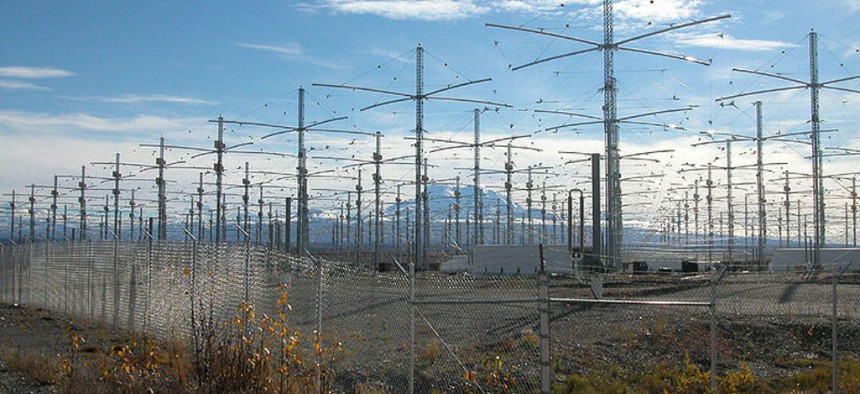Pentagon Won’t Demolish Alaskan Radio Research Site Until 2015

The HAARP antenna array Wikimedia Commons
Defense wants research institutions to take over operation of HAARP.
The Pentagon has delayed its plans to knock down a controversial Alaskan radio research facility until next year, for a possible transfer to a university or scientific institution, Sen. Lisa Murkowski, R-Alaska, announced.
Murkowski said July 2 the Air Force had agreed to halt demolition of the High Frequency Active Auroral Research Program facility until May 2015 while research institutions, including the University of Alaska, develop funding proposals for it.
HAARP, located on 30 acres adjacent to Wrangell-St. Elias National Park in southeastern Alaska, features 180 antennas that beam electrons into the ionosphere for research into radio communications and surveillance. Conspiracy theorists contend the Defense Department uses HAARP, which went into operation in 1997, to conduct mind-control experiments and to modify global weather patterns.
At a May 14 Senate hearing, Murkowski questioned why the Pentagon planned to demolish HAARP this summer to cut costs, and asked whether it was fiscally sound to destroy a $290 million facility when it costs less than 1 percent of that to run it each year.
Scientists from around the world sent Defense Secretary Chuck Hagel last month a petition that decried the HAARP closure and demolition. Robert McCoy, director of the University of Alaska Geophysical Institute, urged Hagel to begin “serious negotiations with other government agencies to find a sustainable model to ensure this unique and extremely valuable national resource is available for atmospheric research in the future.”
Air Force Secretary Deborah Lee James wrote in a July 2 letter the service has received “significant value” from HAARP over the past 17 years “in fields as diverse as underwater communications, radar propagation and space radiation belts."
James said military users of HAARP have completed their applied research at HAARP, which led to the decision to close it and remove DOD-owned equipment. But, she added, the Air Force “recognizes the potential for HAARP as a user facility for fundamental atmospheric research.” Defense, James said, remains open to a proposal that provides a sustainable option for another entity to take ownership and provide for the facility without DOD continuing to pay for the overhead and maintenance costs.”



